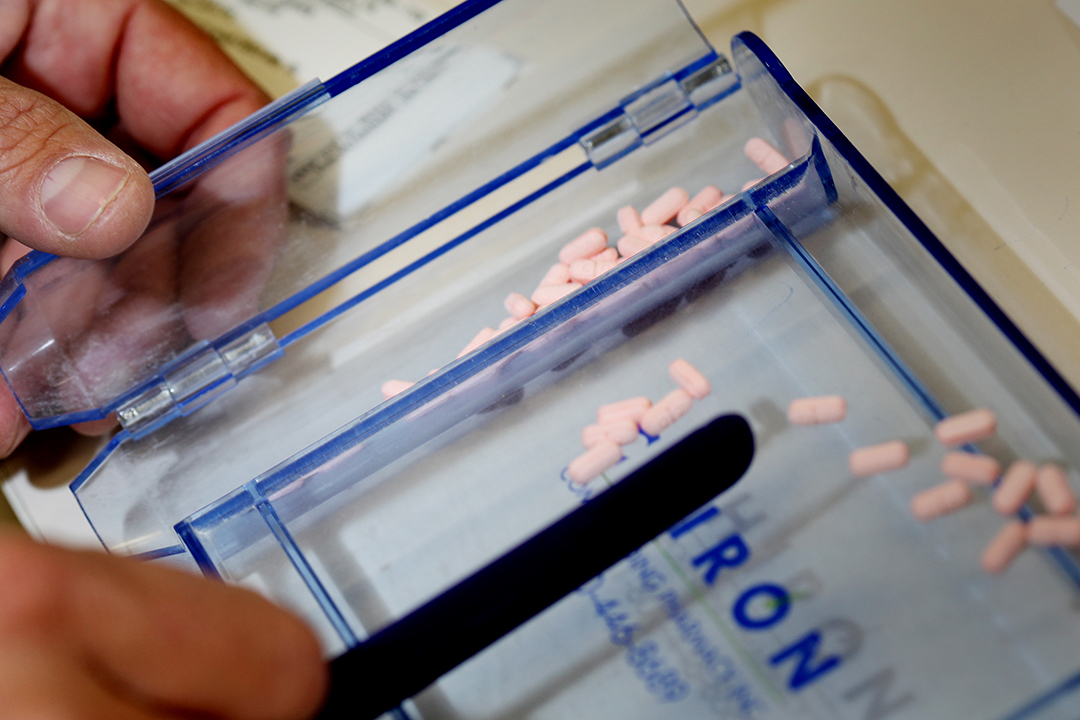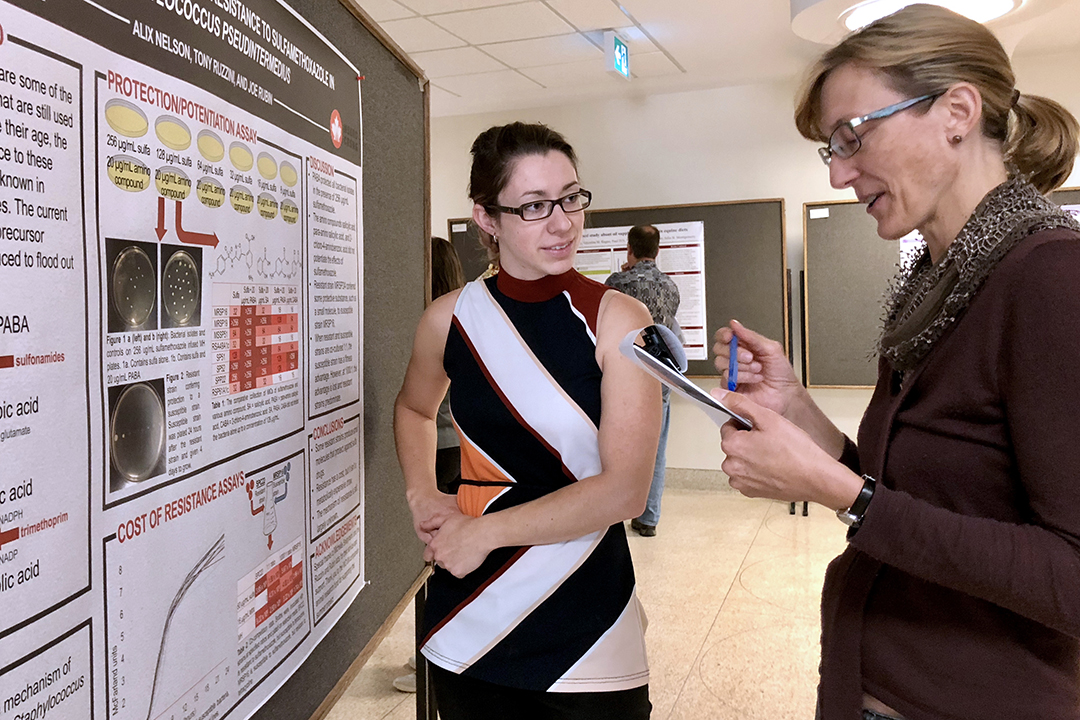
What makes sulfa drugs tick?
Sulfa-based drugs – anyone with a penicillin allergy and an ear infection can testify that these antibiotics are still important today. Dating back to the 1930s, these drugs are some of the first antibiotics used to combat infections — especially urinary tract infections — in both human and veterinary medicine.
By Alix Nelson
What’s baffling about these old antibiotics is that scientists don’t know the exact resistance mechanism to these drugs in some of the more common veterinary pathogens. But why is this important? The antibiotic drug works or doesn’t work, so why should people care how it works?
That information is critical. By understanding how a drug acts on bacteria, researchers can begin to understand how certain strains of bacteria develop a tolerance, or antimicrobial resistance, to them. Antimicrobial resistance is a worldwide concern as bacteria become less responsive to antibiotic therapy.
With the emergence of resistant strains of bacteria, susceptibility testing and mechanism determination has become more critical for clinicians and researchers alike. Susceptibility testing allows clinicians to know what what antibiotics will or will not work against it, while determining the mechanism of antibiotic action can help researchers understand how bacteria develop resistance to them.
Dr. Joe Rubin is an assistant professor in the WCVM’s Department of Veterinary Microbiology whose research work focuses on antimicrobial resistance. He and his research team members are studying different strains of the bacterium Staphylococcus. In Western Canada, they have seen that multidrug resistance Staphylococcus pseudintermedius — including methicillin-resistant strains or MRSP — have remained susceptible to at least one of a handful of antibiotics. The short list includes chloramphenicol, tetracycline and the sulfa drug — trimethoprim-sulfa.
“This [sulfa-based drugs] is one of our last remaining lines of defence against these multidrug-resistant infections in dogs. Because of that, it makes it a much more important compound to us nowadays than it may have been in the past, before we had the emergence of resistance to other drugs,” says Rubin.
“Having a really good understanding of why these organisms are becoming resistant — and perhaps if that resistance is linked to resistance to other drugs — theoretically help us to use these drugs more effectively and judiciously.”
Roshan Priyantha, Rubin’s former graduate student, originally began work on a subset of S. pseudintermedius to determine the minimum inhibitory concentrations (MICs) to sulfamethoxazole. He also conducted genome sequencing to look for known resistance genes, but no known genes were found through his work.
Now Rubin’s team is building upon Priyantha’s work, but they’re taking a different approach with the help of Dr. Tony Ruzzini, who specializes in biological chemistry. Merging analytical chemistry with traditional microbiological techniques, the research team’s goal involves quantifying levels of specific molecules produced — or not produced — by both resistant and susceptible strains of S. pseudintermedius.
Sulfa drugs work by interfering with the synthesis of folate, a B vitamin that is essential to rapidly-dividing cells. Bacteria that are rapidly growing also require folate to divide. A chemical found in folate is the precursor molecule, para-aminobenzoic acid (PABA). Like Lego building blocks, PABA is built and modified into the final folate product. Researchers hypothesize that bacterial resistance involves the overproduction of PABA, which essentially “floods” out the antibiotic drug and negates its effect on the target pathway.
Sulfa drugs look much like PABA, but they aren’t quite “right” and produce a nonfunctional folate product. By making this useless product, sulfa drugs tend to slow down the process of bacterial division in a host’s body.
“We’re looking at the levels of different metabolites to determine the effects of sulfonamides on bacterial physiology,” says Ruzzini.
Interdisciplinary work between the two researchers’ labs can tie together the molecular work on bacterial metabolites to growth and responses to antibiotics. With the combination of these approaches, the WCVM researchers are one step closer to determining the mechanism of resistance to sulfonamide drugs.
“Issues in antimicrobial resistance are very complex, and complex problems don’t have simple solutions. By integrating multiple fields like the related components of microbiology and chemistry is a necessary approach towards trying to understand these difficult issues,” says Rubin.
The researchers' work is funded through Natural Sciences and Engineering Research Council of Canada (NSERC), Saskatchewan Health Research Foundation (SHRF) and the WCVM Companion Animal Health Fund (CAHF).
Alix Nelson of East Selkirk, Man., is a third-year veterinary student at the Western College of Veterinary Medicine (WCVM). Her story is part of a series of articles written by WCVM summer research students.
